Our Blog - London, UK - Day 3
Our 3rd and final walking tour with London Walks, this time a guided visit to Westminster Abbey (we had visited it on our own before but thought we could hear some interesting stories from a guide). We had gotten a little bit of the Abbey-story on the first day when we did the Old Westminster neighborhood tour, which started at roughly the same place. While it is called an Abbey, it is actually not actually an abbey now. Since 1066, it has been used for the coronations of English/British monarchs, royal weddings, royal funerals, as well as a burial site. It started out as an abbey in the mid-10th century for Benedictine monks by Edward the Confessor (you can actually see a picture of this abbey on the 11th-century Bayeux Tapestry). The current church building was started in 1245 by King Henry III. The Gothic architecture is chiefly inspired by 13th-century styles, although you can find some Romanesque and Baroque within the church.
The Western façade, which is next to the shop and where the tourists leave from, is the newest part of the church, having been redone at the end of the 17th century with the adding of the two tall towers in Gothic-Baroque style. Over the Door are 10 statues of 20th-century martyrs, which were added in 1998. I didn't recognize any of them except for Martin Luther King Jr (in the middle with the child at his feet).
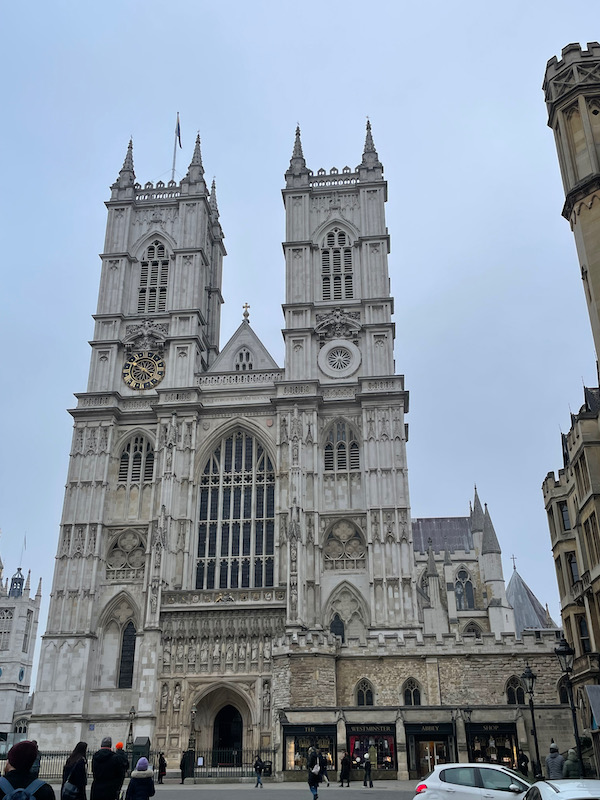
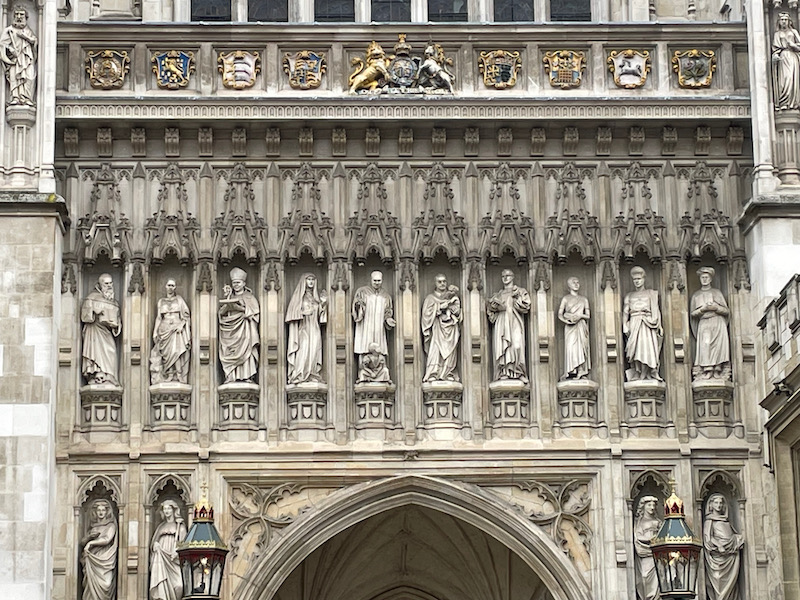
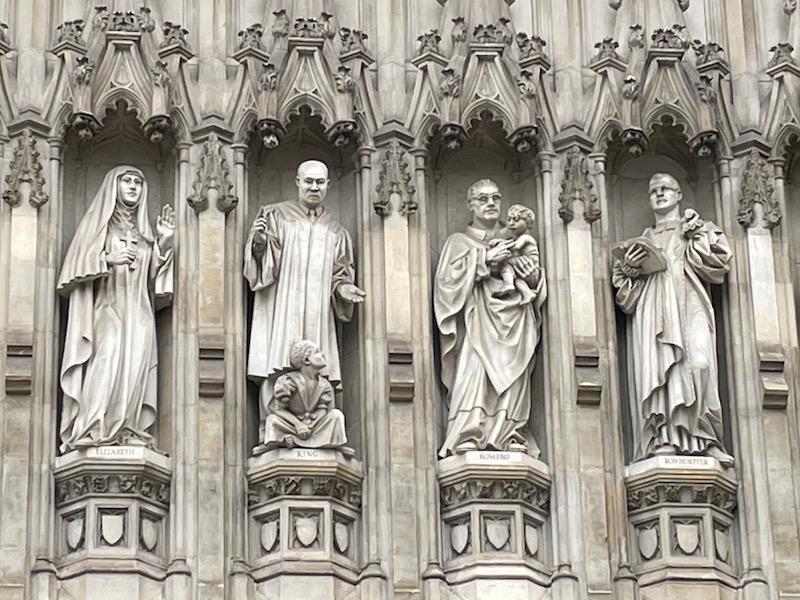
A better picture of the building that they call the Sanctuary, built from 1853-1854. The building consists of two terraces of four houses, either side of the gatehouse which gives access to Dean’s Yard behind. The lack of symmetry is planned, with the design incorporating specific differences in the windows of the houses on either side. The stepped-gables on the right side are almost never seen in England and the story is that the architect had sketched houses with these gables in Ghent (Belgium).

We headed in through the group entrance, which takes you directly into the cloisters, which date from the 13th and 14th centuries. The cloister as used for teaching, meetings, eating, and sleeping.
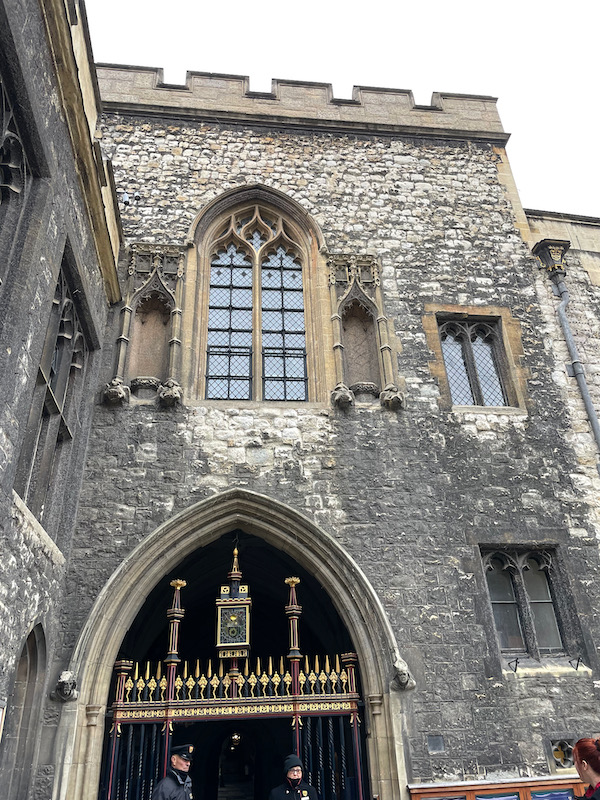
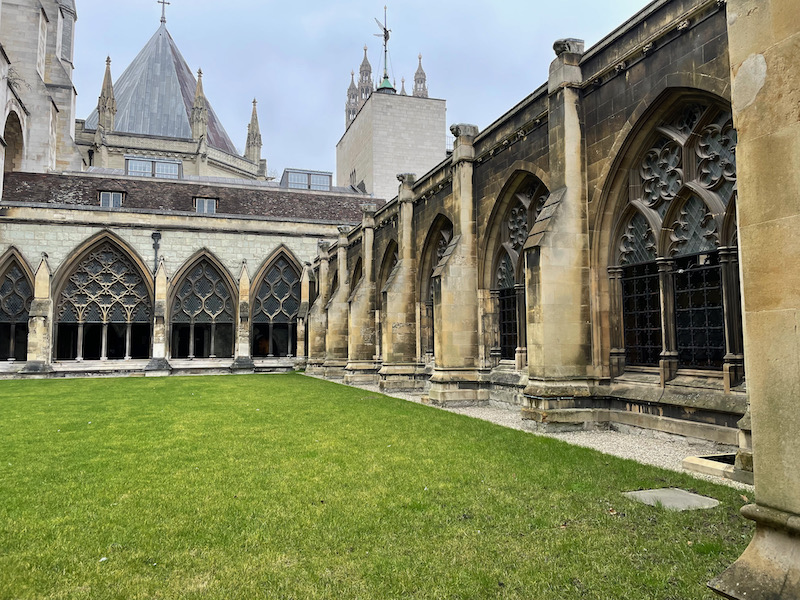

From the cloister, you can glimpse the shimmering gold on the top of the Victoria Tower of the Palace of Westminster.

We didn't go everywhere within the Abbey, but he just touched on a few things. First was the Coronation Chair, which was made for King Edward I around 1300. It has been used at every coronation since 1308, including the latest coronation, that of King Charles III. If you look underneath the seat, you can see an open space. The chair was specifically designed to hold the Stone of Scone of Scotland. The story is that King Edward I (also called Longshanks) wanted to clearly show his authority over the Scots (think of the movie Braveheart), especially after the Scots formed an alliance with France and launched an attack of Carlisle (which was very unsuccessful). Edward confiscated the Scottish coronation stone, called by the Scots the Stone of Destiny (what we call the Stone of Scone) and had this chair designed to hold it, specifically where he is "sitting" on the stone (therefore, sitting on Scotland). The Stone was returned to Scotland but comes back for coronations, as it did for the coronation of King Charles III (you can follow this link to an article that shows King Charles on the coronation chair, and you can see the stone underneath.
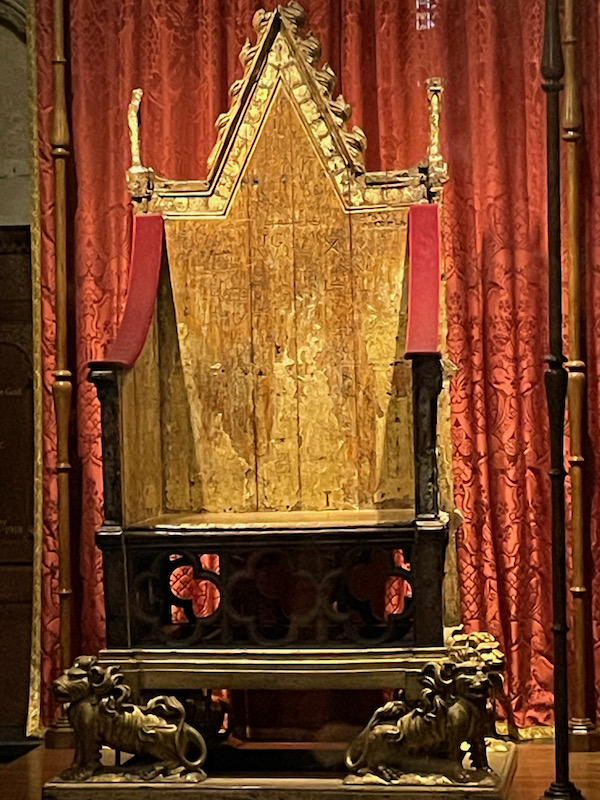
There is a mis-mash of stained-glass windows within the Abbey. The 13th century stained-glass with mostly destroyed in the English Civil War and the Blitz and replaced by clear glass (some of which still remains). Since the 19th century, the windows have been gradually replaced. The newest window was unveiled in 2018, entitled "The Queen's Window" and shows a view of the countryside in Yorkshire, where the artist is from.
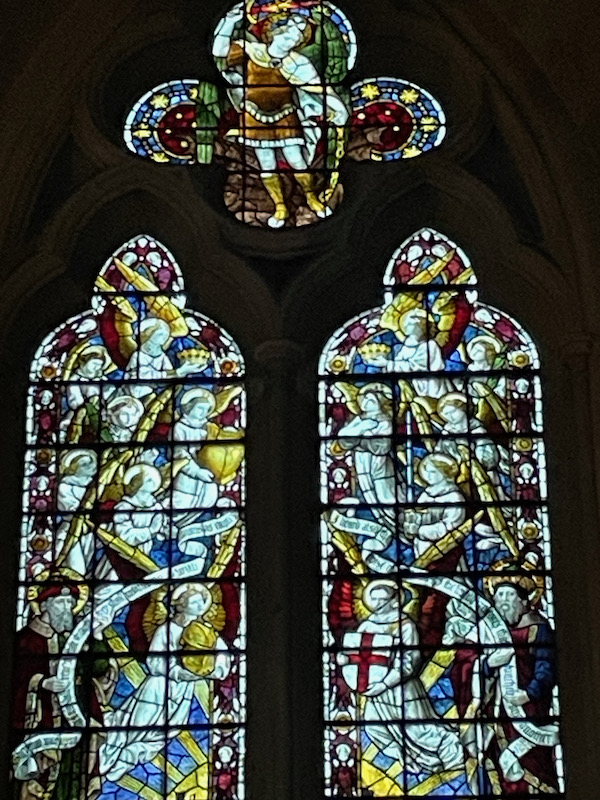
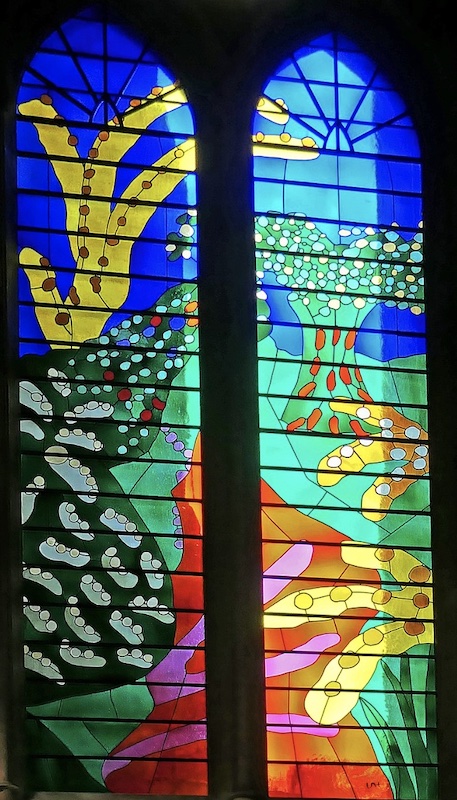
Then we got a nice look at the nave, where you can really see the French Gothic design. The height of the building is supported by flying buttresses (which you can see on the outside), and you can see the Gothic pointed arches down the nave and the Gothic vaults. One unique thing here is the use of 2 different colored stone on the columns.
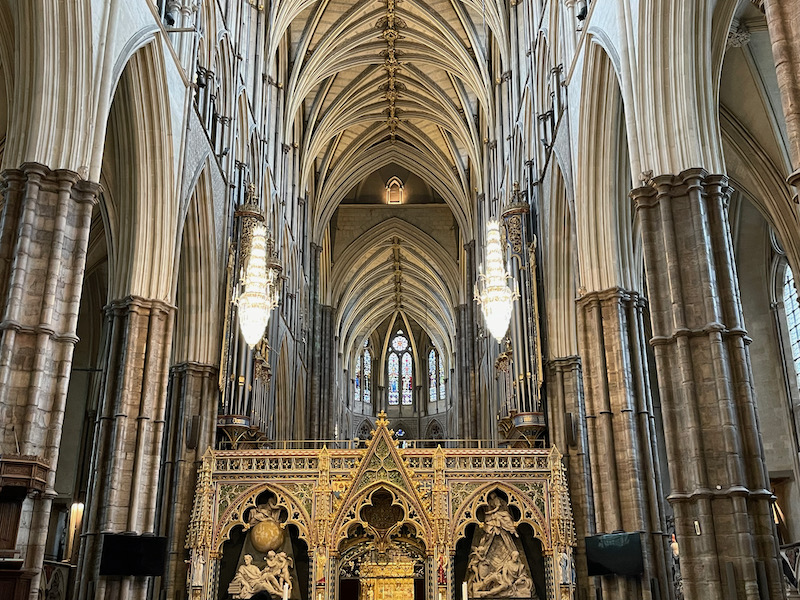

In the 1830s, the previous 13th-century stone screen dividing the nave from the choir was replaced by this one, which contains the monuments for the scientist Isaac Newton (left, leaning on books) and the military general James Stanhope (right). All around the ornate top are small sculptures.
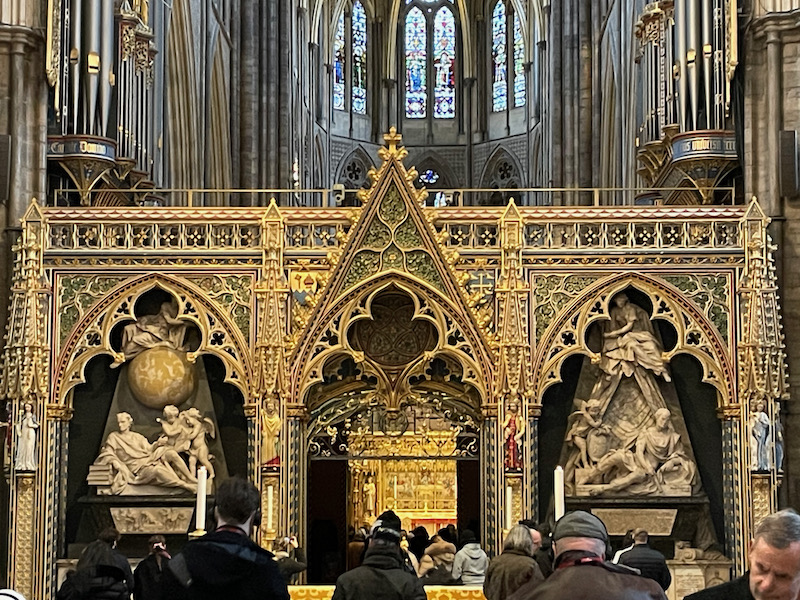
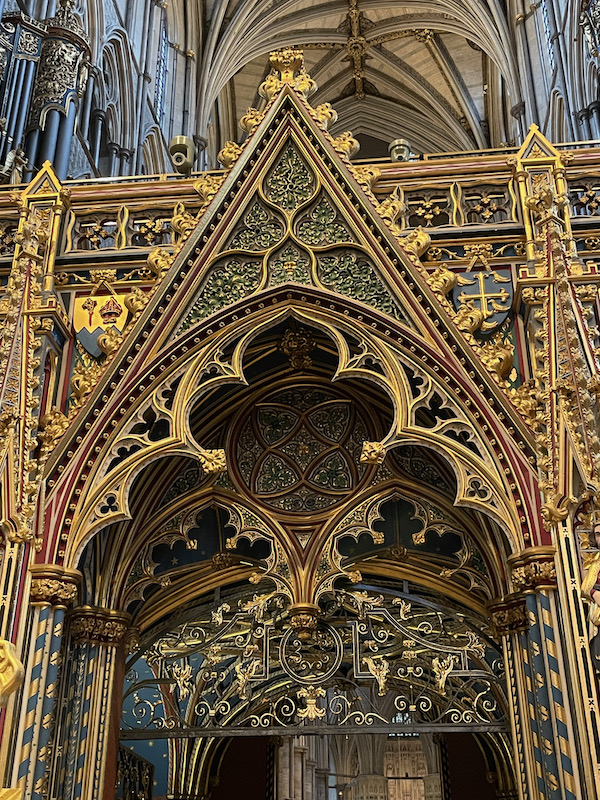

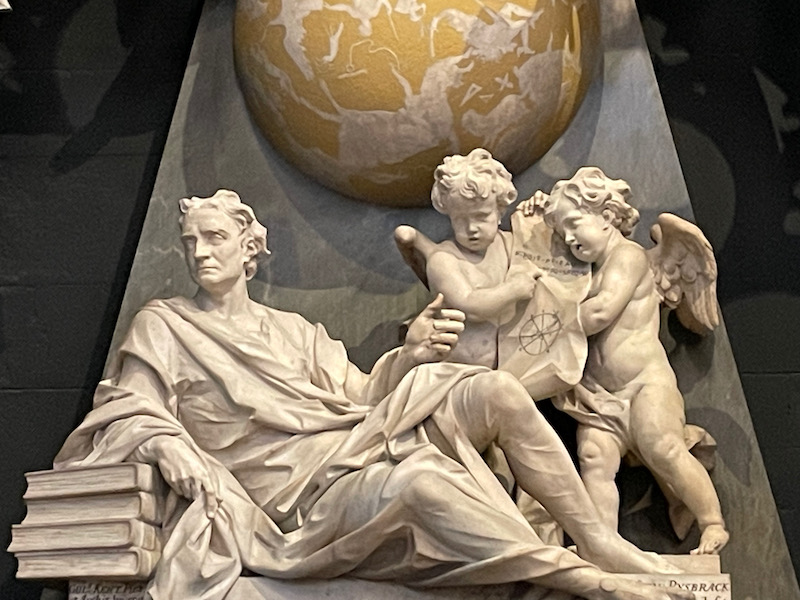

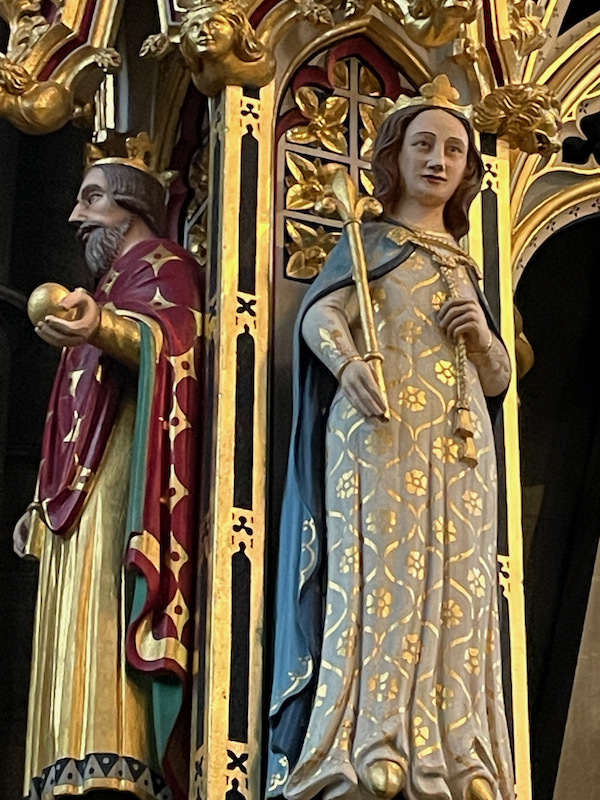
Just in front of the tomb of Isaac Newton and next to a plaque for Charles Darwin, is where the "mortal remains" of Stephen Hawking are. The ten characters of Hawking's equation express his idea that black holes in the universe are not entirely black but emit a glow, that would become known as Hawking radiation. I think the guide mentioned that Hawking was the most recent addition.
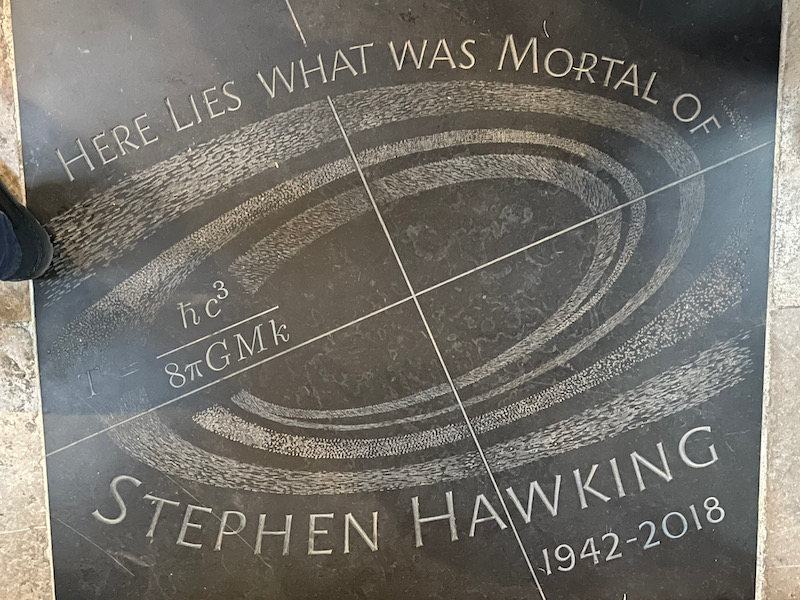
Passing under a blue "sky" of stars under the screen, you find yourself in the choir. The stalls date back to 1848 and were designed by the same person who did the screen you just saw.
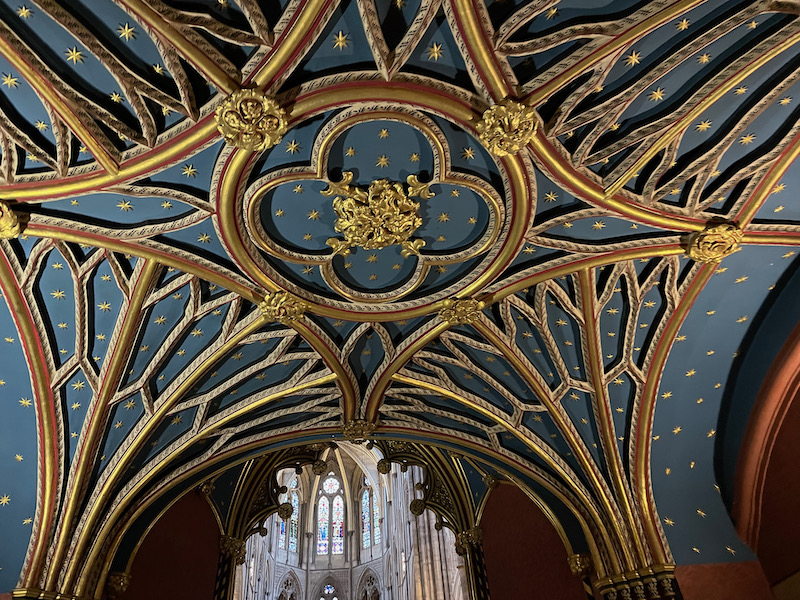
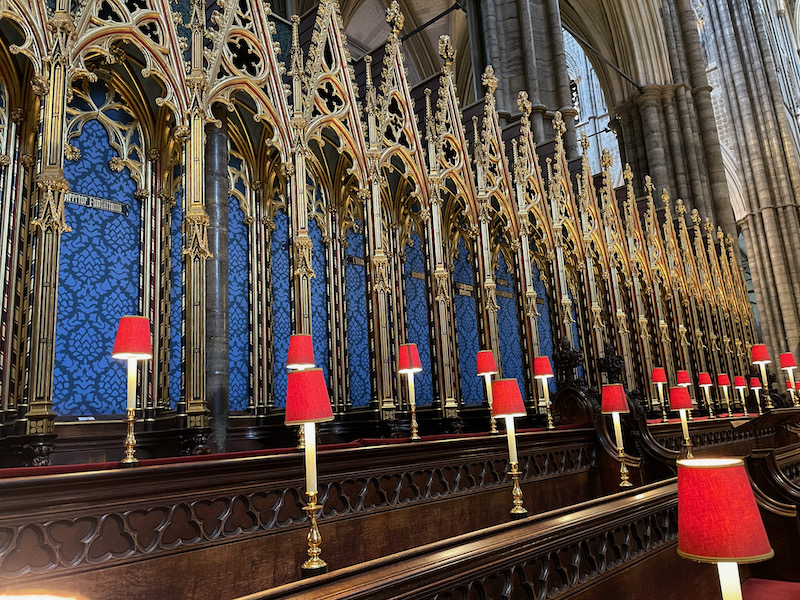

Then a peek at the right transept, with its rose window. You can see the chandeliers there as well ... in the nave and transepts are 16 crystal chandeliers made of handblown Waterford glass. They were donated by the Guinness family in 1965 to commemorate the abbey's 900th anniversary.

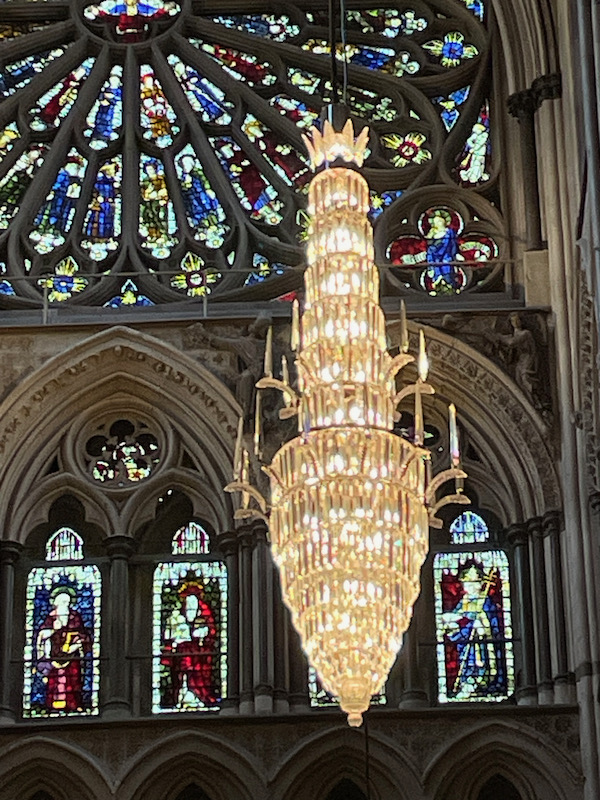
Here we have the high altar and its screen, both created between 1867 and 1873. There are 4 sculptures (Moses, St. Peter, St. Paul and King David) and a mosaic of the Last Supper.

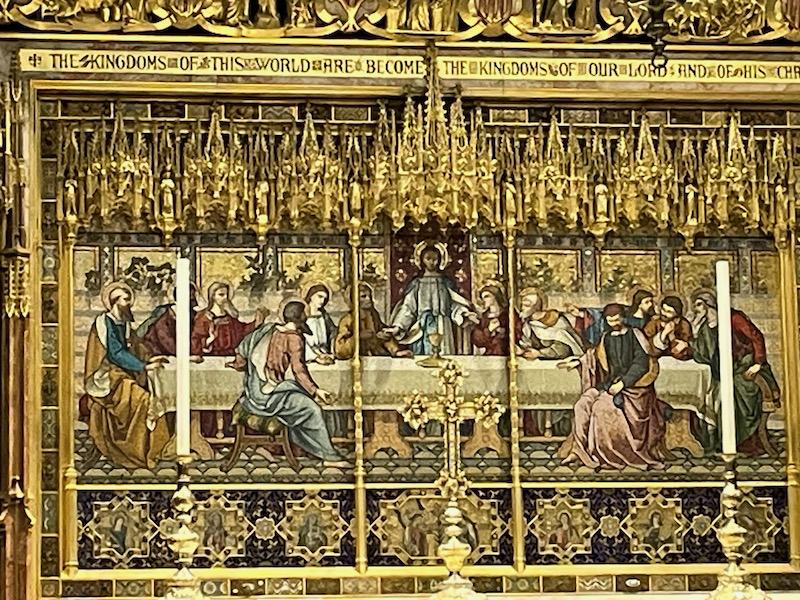
At the crossing, in front of Edward the Confessor's shrine and the main altar, is the Cosmati pavement, a 700-year-old tiled floor made of almost 30,000 pieces of colored glass and stone. Cosmati was a family from Rome known for this type of work. While there are quite a few Cosmati floors across Europe, this one is unique in that it uses the dark Purbeck marble to form the borders instead of the typical white marble. The circle right in front of the altar is where the coronation chair is placed during the ceremony.
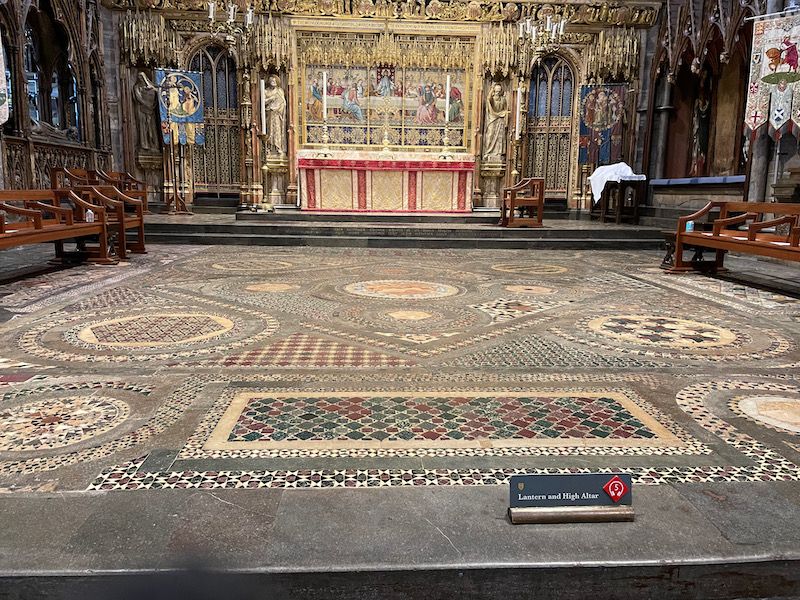

I haven't shown very many burials or monuments yet, even though there are SOOOOO many of them. There are over 3300 people buried or commemorated in the abbey. In addition to monarchs, there are scientists (I have already mentioned Isaac Newton, Charles Darwin, and Stephen Hawking), poets (Shakespeare, Dickens, Chaucer), and politicians (none of who I recognize), as well as other "famous" people. A few other interesting ones are actor Laurence Olivier and opera composer George Frideric Handel. Here I just picked one at random to show ... some are pretty simple (Hawking and Darwin) while others like this one are pretty ornate.

We then moved into an area with quite a few monarchs, including the tomb of King Henry III, who had this Gothic abbey built and laid the foundation stone in 1220. when he died in 1272, his body was buried in an older grave and then moved to this large tomb in 1291 by his son, King Edward I.

In this section of the church, you can see the very elaborate carved stone statues over the arches and on the facing wall.
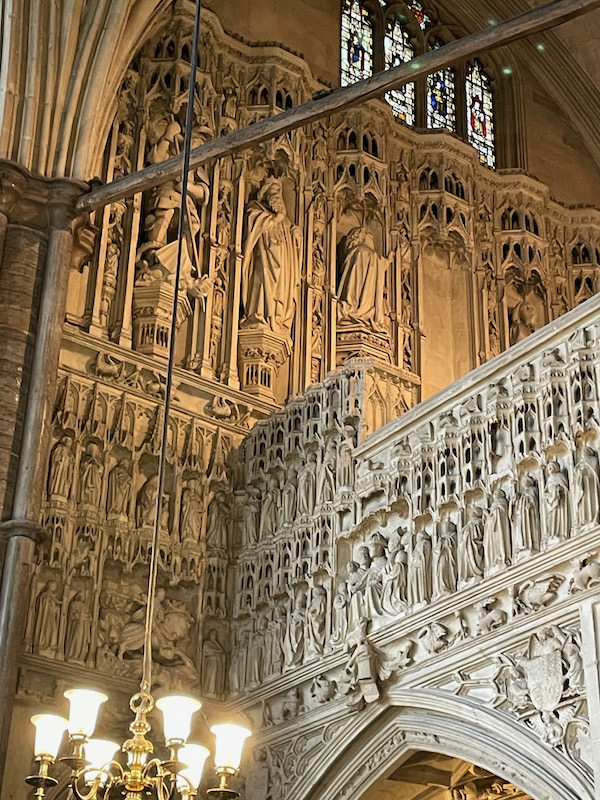

Here is the tomb for Sir Thomas Bromley, who presided over the trial of Mary, Queen of Scots and died three months after her execution (although I can't say the 2 things were connected but some people attribute the strain of the trial to his death). At the top is a royal coat of arms with the "E" and "R" (E represents Elizabeth, while the R represents Regina). I learned a bit from the guide with respect to tombs here. If you look at the bottom, you will see 8 people kneeling .. 4 boys followed by 4 girls. These are his 8 children and they are shown with the boys always before the girls. He also said that he knows from the tomb that none of his kids died before him. Next to him was another tomb with one of the children holding a skull. This would indicate that this daughter died before the person in the tomb.

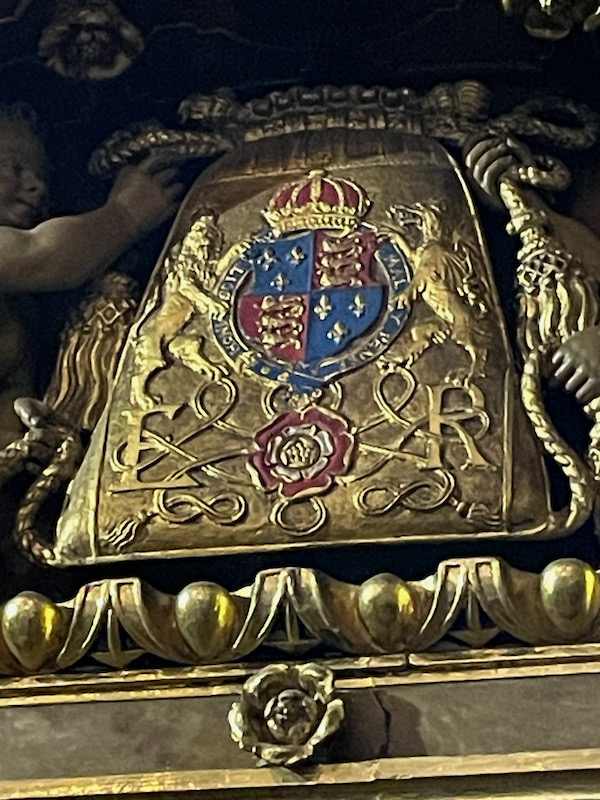
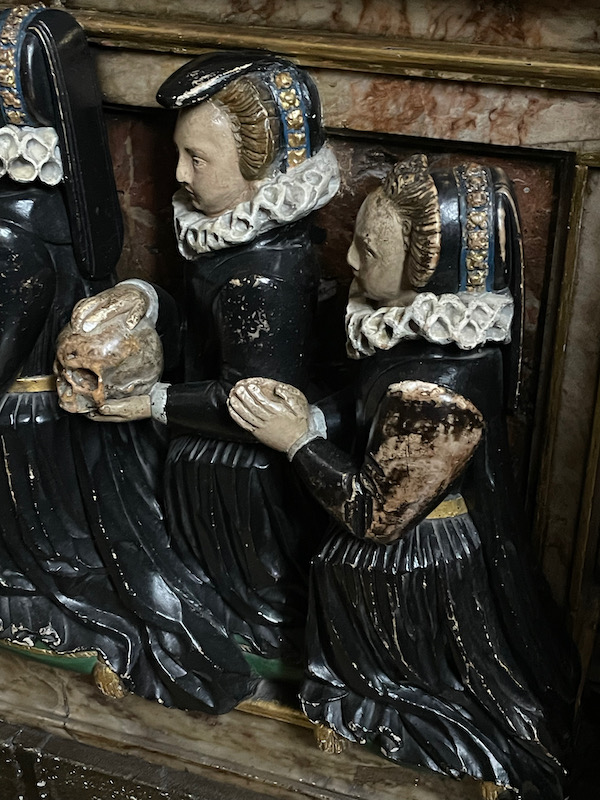
On the North side of the Henry VII Chapel is a sub-chapel with a huge tomb. This contains the Protestant Queen Elizabeth I and her half-sister, the Catholic Queen Mary I. Interestingly enough, this as not where the remains of Queen Elizabeth I started. After her funeral, she was buried in the vault of her grandfather, Henry VII. It was 3 years later, in 1606, when King James I moved her remains, placing her coffin on top of that of Mary. And then a few close-up photos of the statues and pendant fan vault ceiling.

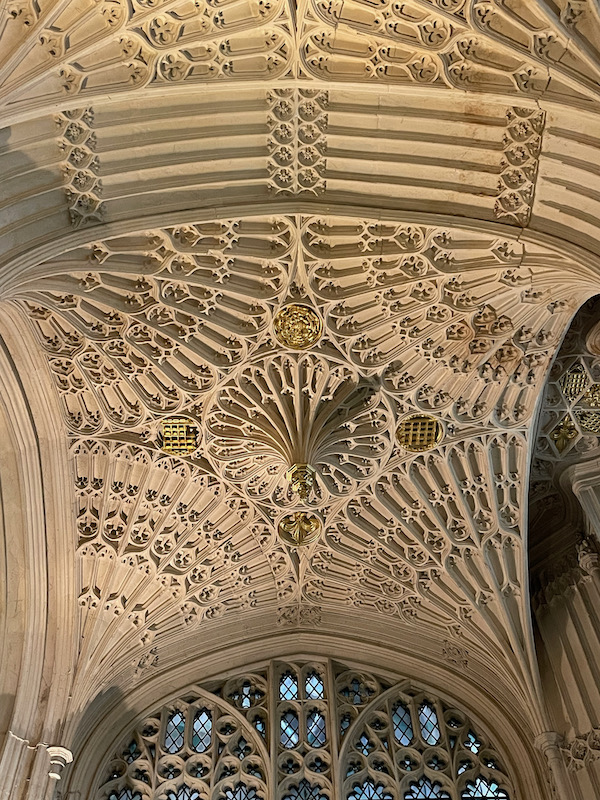
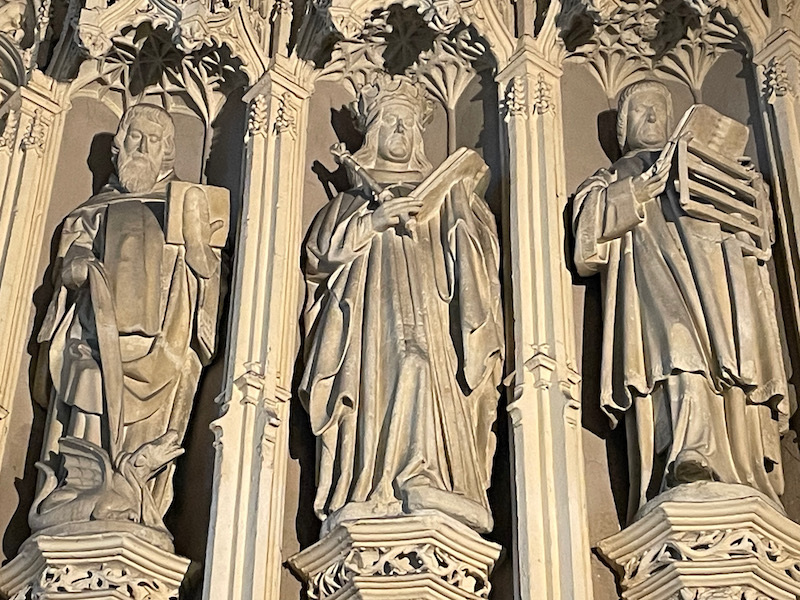
Then we move into the middle portion of the chapel, and which contains banners of the senior Knights and Dames Grand Cross of the Order of the Bath, along with stalls for them. The banner and the "top" of the stalls is for the current member along with a metal plaque on their stall. When a member dies, the banner and top is removed but the stall plate remains, so you can see those remaining.

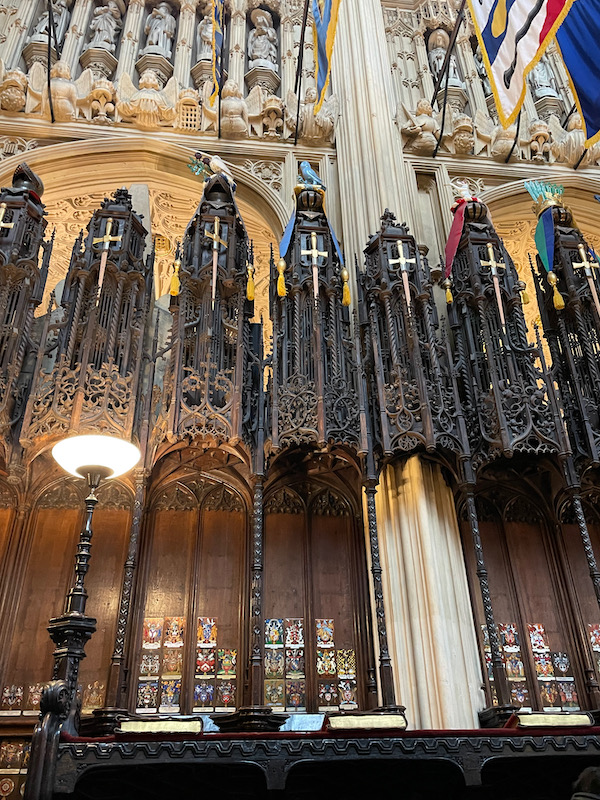
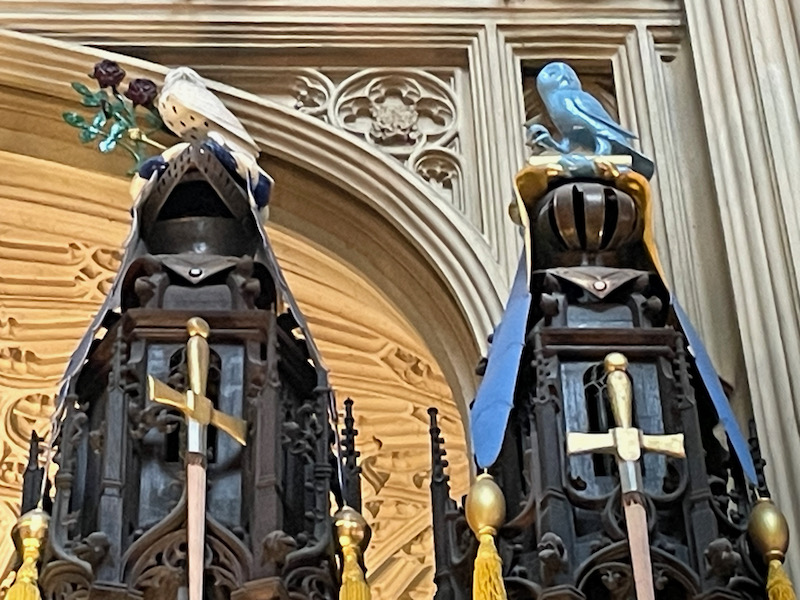
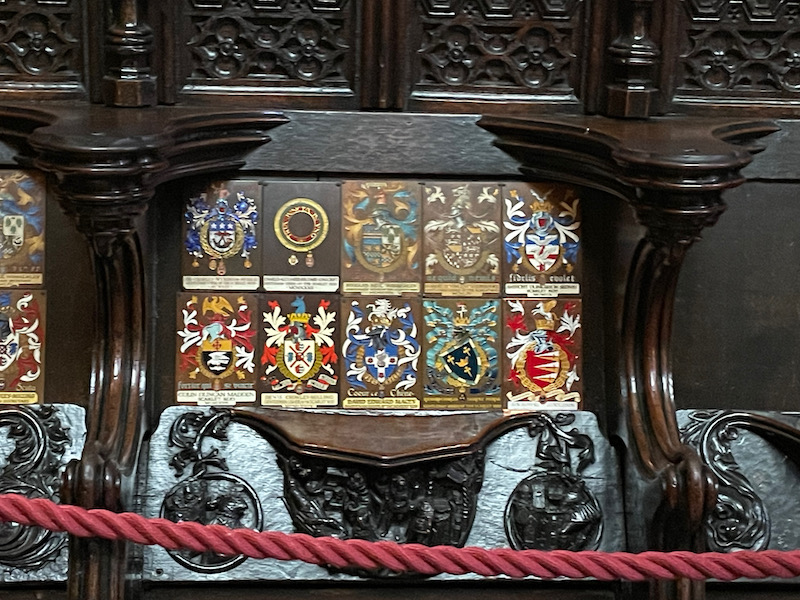
In the middle is the altar and tombs of Henry VII and his wife Elizabeth of York.
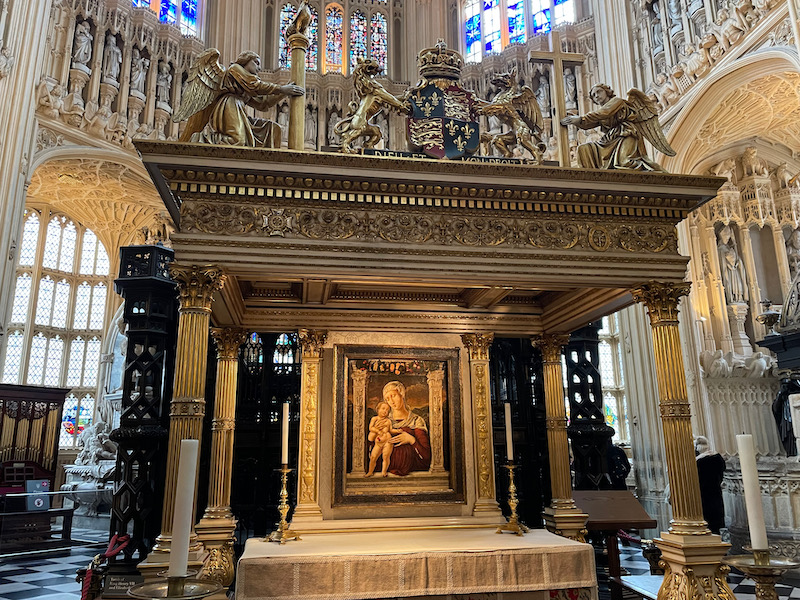
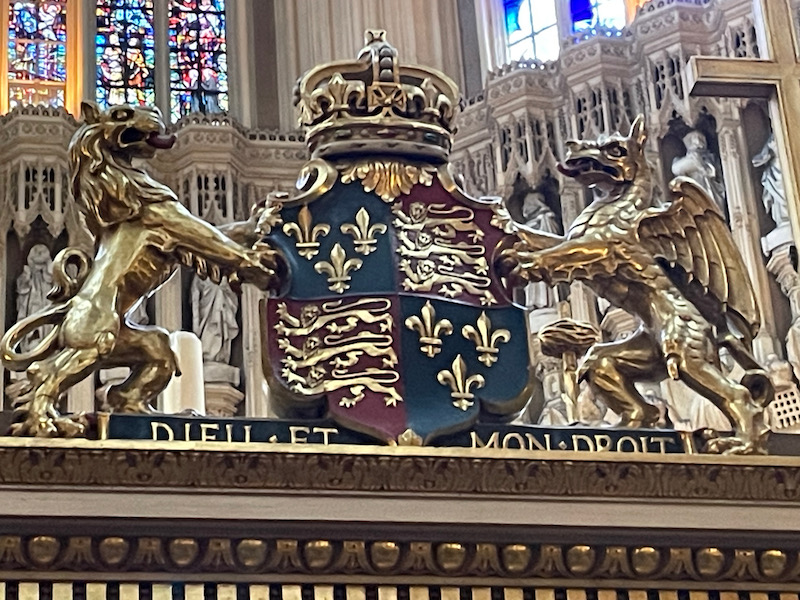
Turning around, there is a huge stained-glass window.
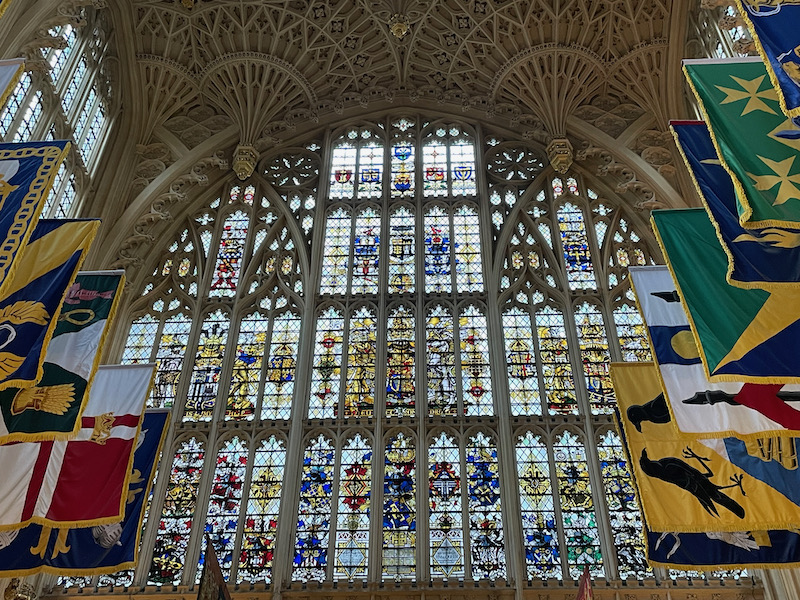


In the other sub-chapel is the tomb of Mary Queen of Scots. Originally buried in Peterborough Cathedral, her son King James I had her remains brought to Westminster Abbey in 1612. There, he had a huge marble tomb for her created with a white marble effigy of her under an elaborate canopy. At her feet stands a red Scottish lion wearing a crown.
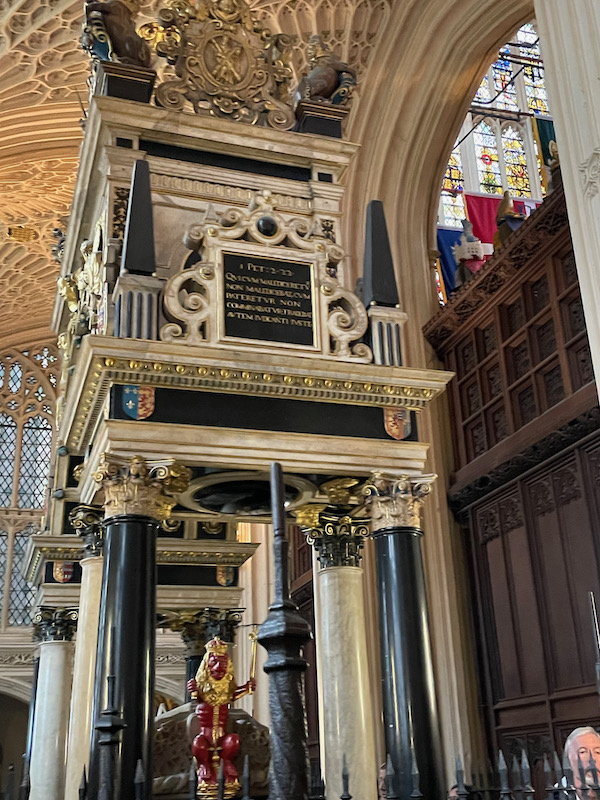


Then a quick view of another side of the Abbey. You can see the large rose window, which is in the transept, and the flying buttresses that hold the weight of the roof.
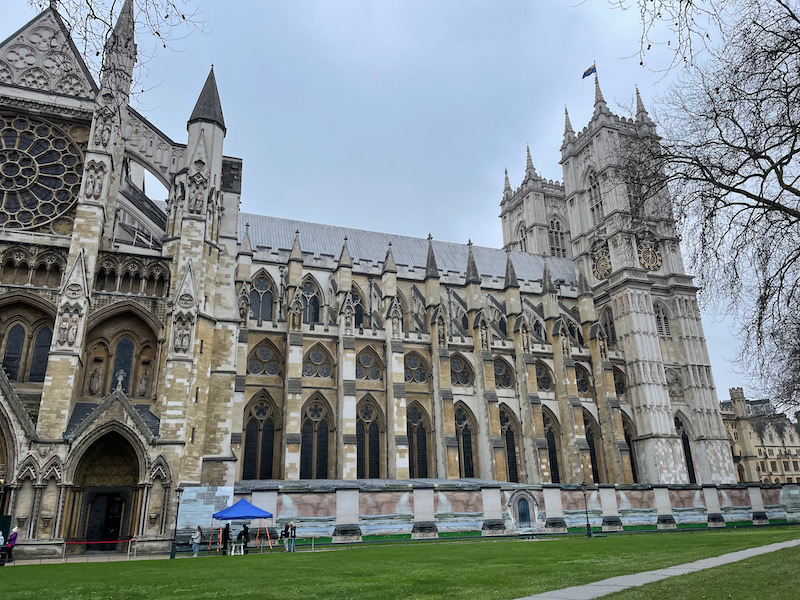
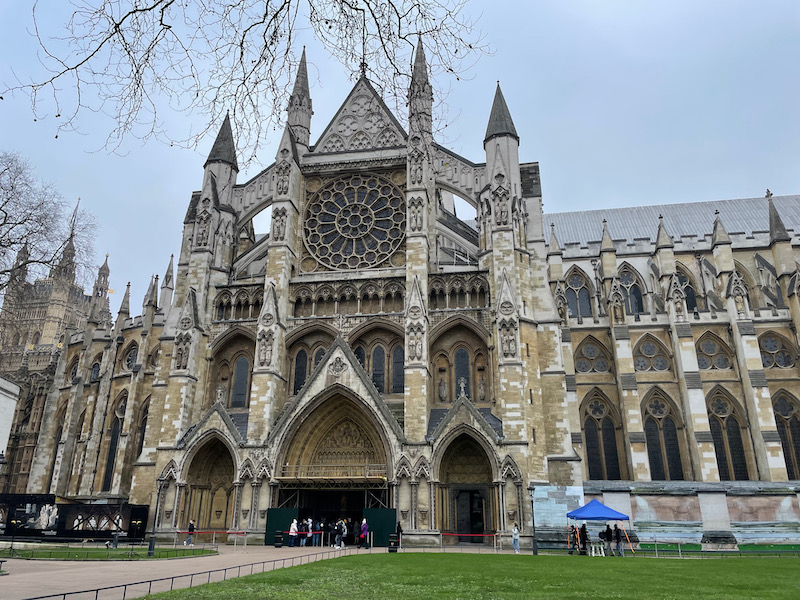
We then headed past Big Ben and the Palace of Westminster (where the House of Lord and House of Commons is) and across the Westminster Bridge.

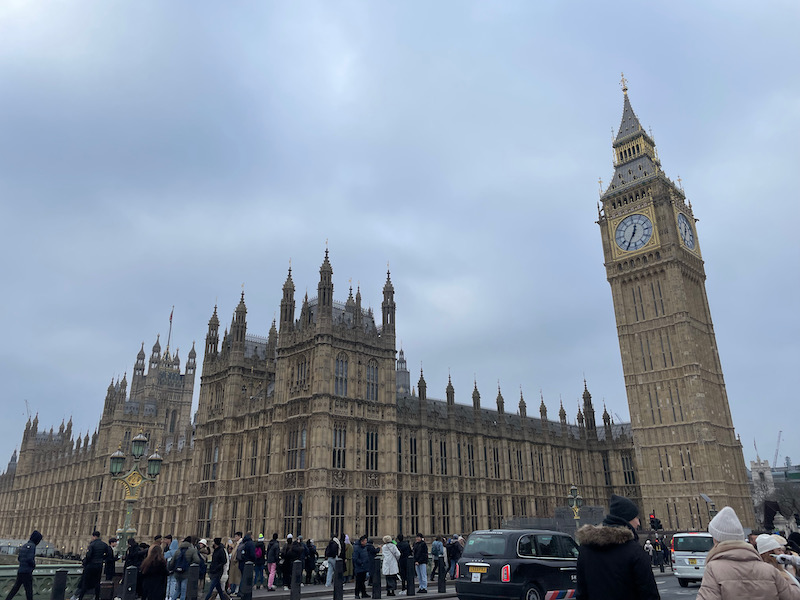
Our 2nd (and final) play was Agatha Christie's Witness for the Prosecution. Originally a short story and play published under the name "Traitor's Hands" in 1925, it was republished under the name "The Witness for the Prosecution" in 1933. The play in London opened in 1953 and then a film in 1957. In October 2017, a specially-built courtroom stage was created in the London County Hall (which served as the headquarters of local government for London for 64 years) and the play opened there. It is currently set to run just until April 2024, so we wanted to catch it while we could (in case it closed). We were really close to the stage again, row B. You can actually buy tickets that put you in the jury box and then you have "parts" to play within the production.
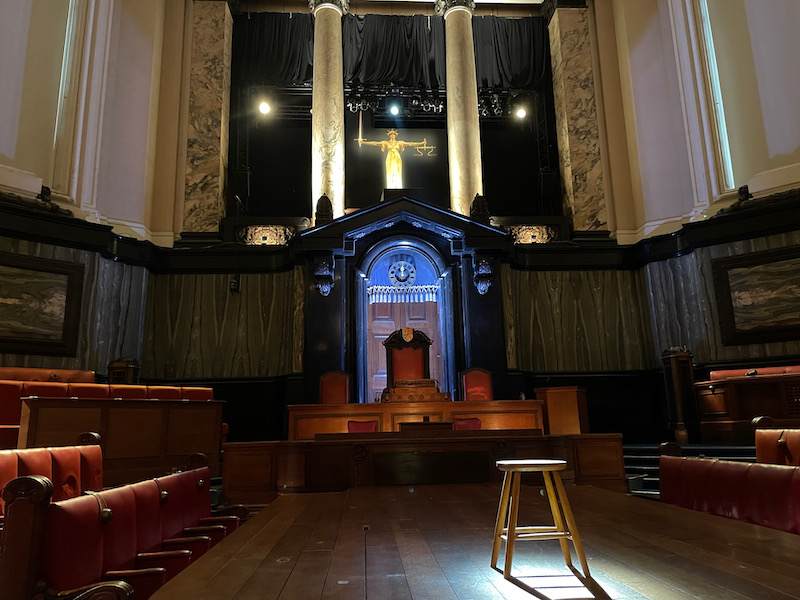
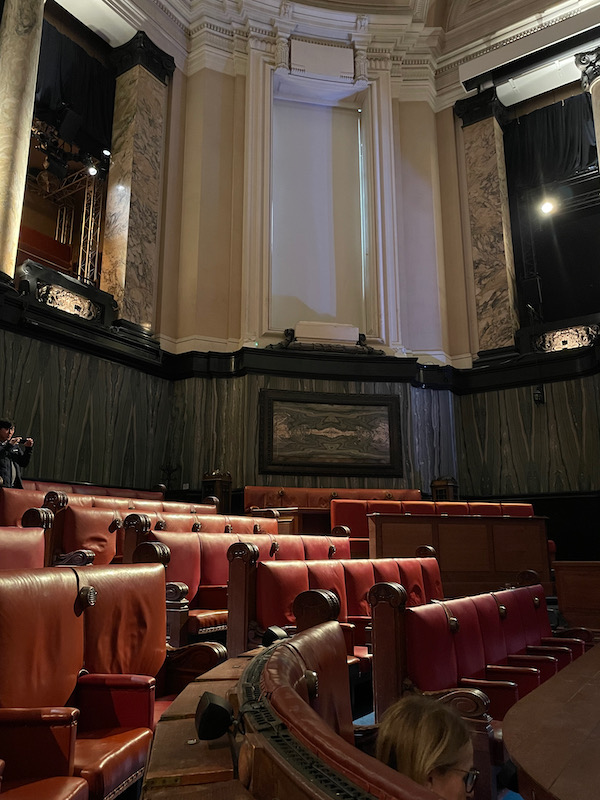

This was our last night, and then we headed back home.